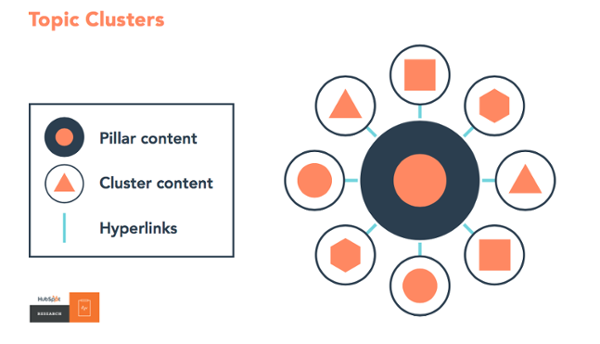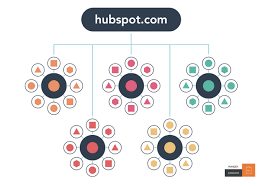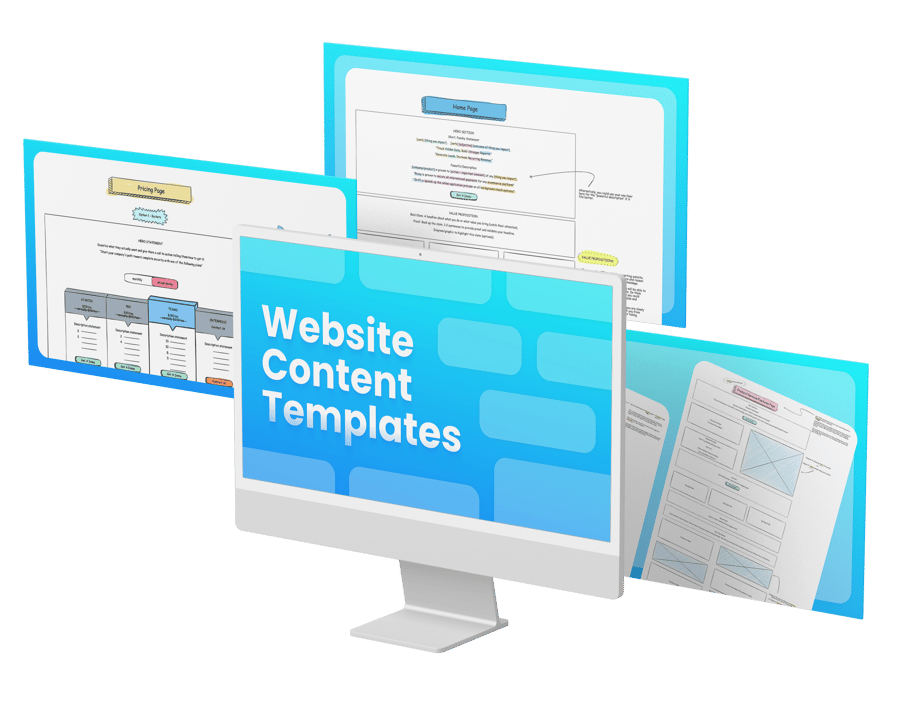SEO has such a sleazy connotation today.
Just a few years ago, you could target a few long tail keywords, buy some backlinks, and call it a day.
Boom! Organic traffic.
People made a lot of money doing SEO services this way, and personally, they just ripped clients off.
But now?
You can’t just select a keyword like “Best design agency in Houston,” buy backlinks, and expect to rank for it.
Now, you still can (kind of...) so don’t be fooled - but it’s the easiest way to get your company and anything you’re tied to in the future, blacklisted from Google.
Because of the rise of voice search, which is expected to exceed 50% of all searches before 2020, we have to remove ourselves from this old school “caveman” talk, and start to think in a more natural and organic way.
Creating A Topic Cluster

We need to think about creating clusters, or pillars, of content around similar topics, and start linking them back to each other.
The way content pillars work revolves around the same way creative writing students would put together a mind map of items they are writing about.
For example, you’re going to have a “Core topic” in a bubble, which might be something like “inbound marketing.”
You should know for a fact that if you want to rank for the term “inbound marketing” that you’re up against heavy competition and you’re likely never going to rank for it.
So… why would you want to write content around it? This is why.
You have this core topic of "Inbound Marketing," and you now need to look at what kind of terms or searches might be relevant around that phrase.
These are called “subtopics” and they appear as smaller bubbles that connect back to the core topic.
Some of these subtopics might be “inbound marketing strategies,” or “inbound lead generation,” or maybe even “what is inbound marketing?”
You’re going to want to build what’s called a pillar page on your website that will house all your content for that single core topic.
The purpose of a pillar page is to provide an immense amount of information that can grow as time goes on about that term.
Google rewards pages that are helpful, extensively resourceful, and very relevant.
Attempting to rank for terms with 500 words on a page is becoming increasingly more and more difficult... Therefore, your pillar page will be long, and it will be sectioned out with a table of contents so users can understand where they are and what they are reading.
Using Subtopics
Think of it as the ultimate comprehensive resource around A single topic, as if you’re writing a book about that core topic.
As far as the subtopics go, you’re going to do two things.
First off, you should build a “chapter” or a section of your pillar page that goes into detail about the subtopic.
For example, if your pillar page is called “inbound marketing” and your subtopic is “what is inbound marketing,” then you’re going to have a section, probably one of the first, that describes in a few hundred words what inbound marketing is and why it’s important.
When someone hits that page for the first time, they can get a quick, brief synopsis of the topic.
Next, you’re going to create a blog post around THAT SAME pillar subtopic, and you’re going to link in that blog post somewhere back to the pillar page.
That’s an extremely important component of this strategy that we don’t want to miss.
In order to get the pillar strategy to work appropriately, it’s imperative that all your blogs point back to the root, or the core topic, and that’s going to happen by sending these blogs back to the pillar page.
Defining Your Pillars

So the next question becomes, what should I use for my pillars?
Well I think you probably already know that answer.
What kind of products or services do you sell?
What are you good at?
What are some buzz terms in your industry?
Pillar... all of it!
Start with as many potential pillar topics that you can think of, and narrow it down to 3 or so, based off of popularity, your ability to write about it and to write well about, and the relevancy to your company.




